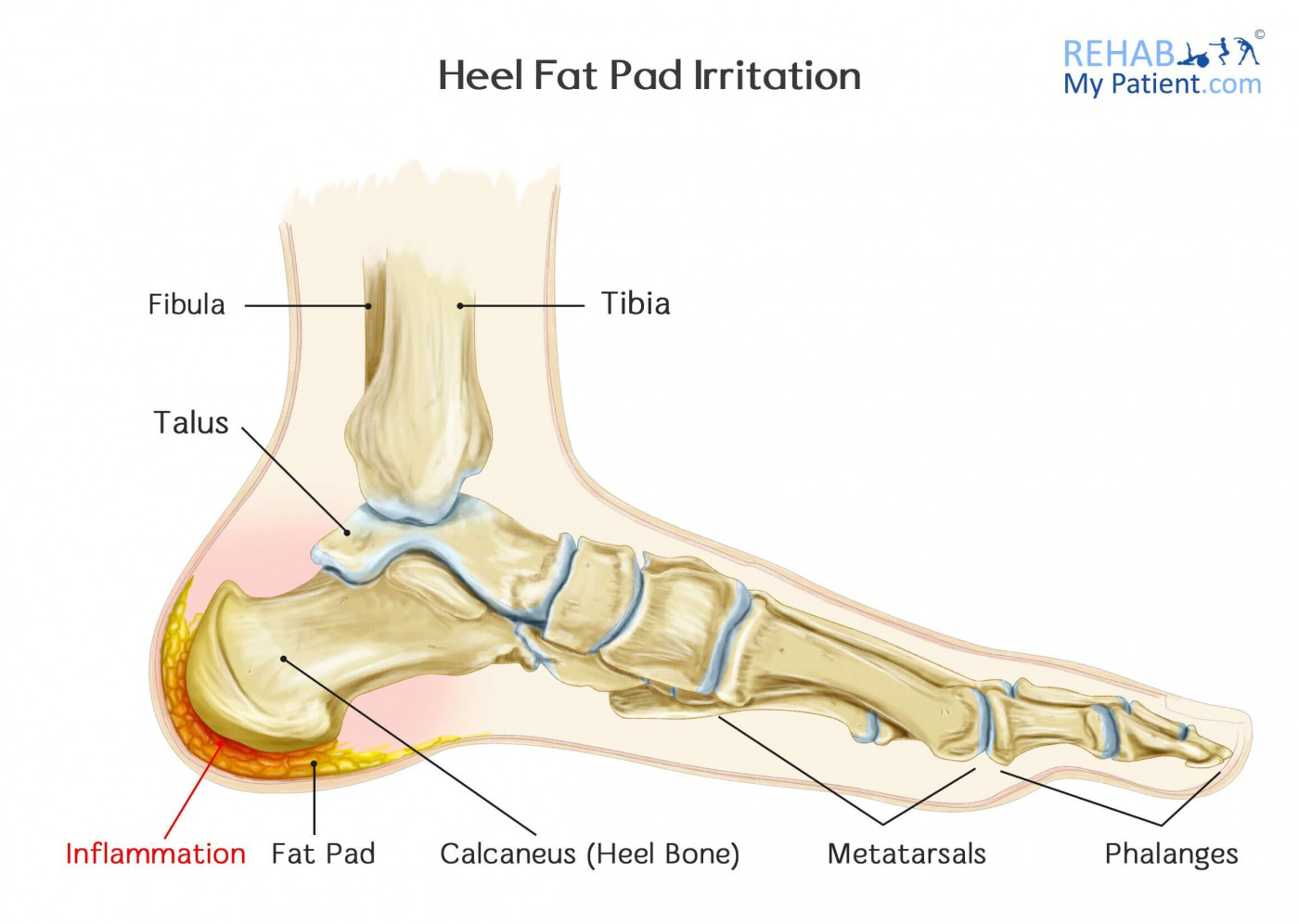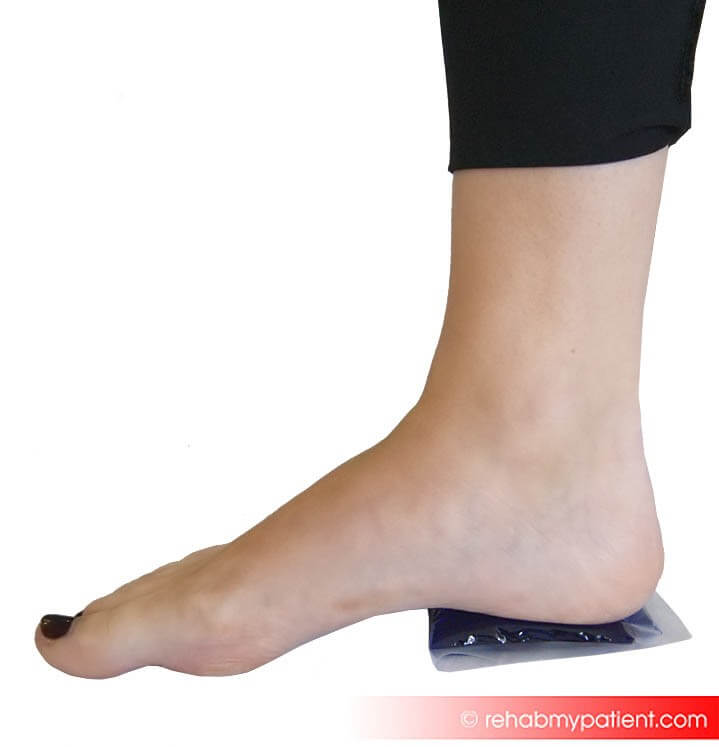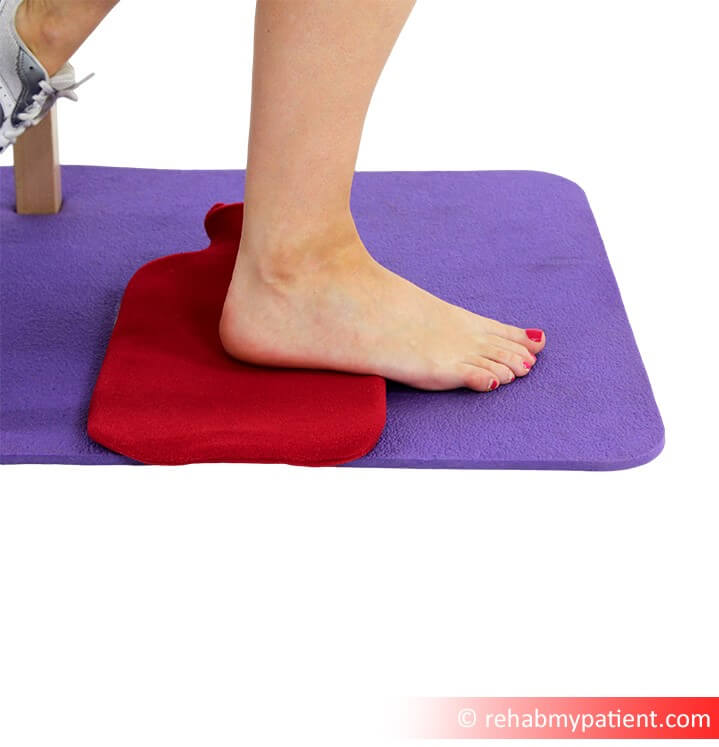
The heel fat pad works to protect the heel bone by absorbing ground reaction force that comes as you make your way through the day. Unfortunately, heel pain is sometimes the result of various reasons associated with problems in the fat pad. One of the common problems causing heel pain is inflammation of the fat pads. This often occurs after forceful, repeated and prolonged activities. Long distance walking and running (especially in hard shoes) is one of the main examples attributed with irritation of the heel fat pad. But also jumpers, for example gymnasts can also have problems here. The pain tends to be average and recovery takes a few weeks.
Problems with the heel fat pad are sometimes grouped into the term “syndrome” which covers any kind of heel fat pad issue.
The difficult thing for the doctor or therapist is to accurately diagnose the problem. Fat pad irritation/inflammation can be very similar to heel bone bruising. And heel bone bruising can be very similar to a small fracture in the heel. For this reason, you may be asked to go for an X-ray to check the exact cause of your heel pain.
Heel Fat Pad Irritation/Syndrome Anatomy
The heel bone is known as the calcaneus. Beneath the calcaneus is a soft fatty pad which acts as a cushion for the heel. It is easy to feel, simply press the soft flesh under your heel, and you are pressing the heel fat pad. Sometimes this pad can become irritated or inflamed and that often occurs when too much pressure is placed through the heel, as described above.

How to Treat Heel Fat Pad Irritation:
- Modify Your Activity
You may require complete rest, or you may just need to modify your activity. For example, if you a runner try running on softer ground or a treadmill. You could also try running for shorter periods of time, or at a slower pace which might reduce the load going through your heel.
- Shoe Inserts
Shoe inserts can be useful for cushioning and distributing force through the feet. Orthotics can also be used to alter the biomechanics of your feet to reduce load going into the heel. Wearing the correct fitting shoes can also be important, and making sure this type of shoes is good for your foot and your particular sport.
- Ice and Heat


Using a combination of ice and heat, or one or the other, might help to reduce any inflammation of the heel fat pad. Discuss with your therapist the best way to proceed with this.
- Athletic Tape
Using athletic tape will help to protect the fat pad and keep it in place. One of the main things you want to do is protect the irritated heel pad and make sure it doesn’t move around, as that is only going to slow the healing process.
Tips:
- Specific exercises will help to improve movement in the foot and strengthen the surrounding muscles.
- Make sure to follow the instructions provided by the doctor or practitioner to avoid causing further injury to the foot.
- Avoid jumping and landing on your feet from an elevated height.
- Reduce heavy force loading (e.g. running regularly on hard ground). Vary the types of exercise that you do (e.g. runners could implement a cycling or swimming program into the schedule).
Sign Up
Sign up for your free trial now!
Get started with Rehab My Patient today and revolutionize your exercise prescription process for effective rehabilitation.
Start Your 14-Day Free Trial